Australia is indeed a beautiful country. Almost everyone has heard or known about places like Uluru (the Ayers Rocks), the Great Barrier Reef, the Great Ocean and Sydney. The sheer abundance of remarkable places – natural as well as man-made – in Australia makes it impossible for us to know them all, let alone visit them all. There is something interesting in that fact, as it ensures that there will always be a great place worth a visit. 10 Weird Places In Australia You Won’t Believe Actually Exist is one of those places.
The following list of places is by no means exhaustive and includes some of these lesser known – although you may recognize or even visit some – interesting places in Australia.
1. Pinnacles Desert
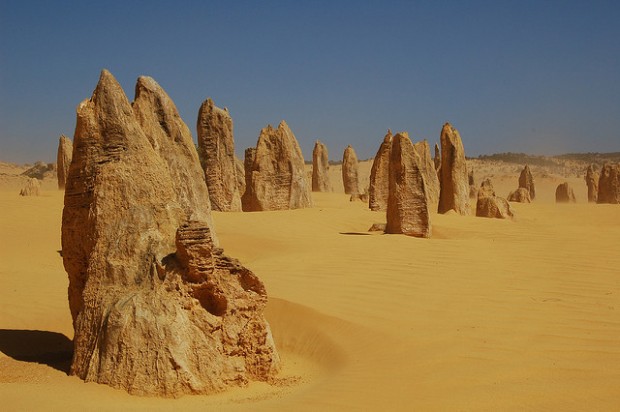
Image source: Sek Keung Lo
There are many exotic natural attractions in Australia, but the Pinnacles Desert probably tops them all. This golden desert is located near the town of Cervantes in Eastern Australia, a short drive north of Perth. What is unique about it is that thousands upon thousands of limestone columns dot the area. They come in all shapes imaginable, from towers several meters high to stacks and domes. The stone pillars are very accessible, there is a roundabout drive through the desert, or you can walk. The best time to visit this moonscape is just before sunset.
2. Huge gold mining area
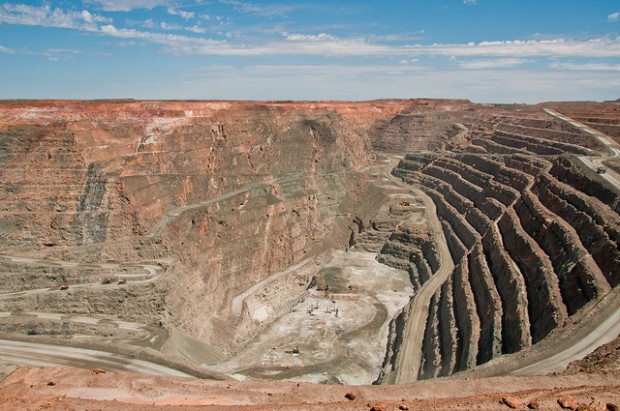
Image source: Graeme Churchard
Another interesting place in Western Australia is the Super Pit in Kalgoorlie, a large mining town in the outback. Officially known as the Fimiston Open Pit, the Super Pit is the largest open gold mine in Australia. It is huge, 1.5 km wide, 3.5 km long and no less than 570 meters deep. It is so large that it can be seen from outer space.
3. Coober Pedy
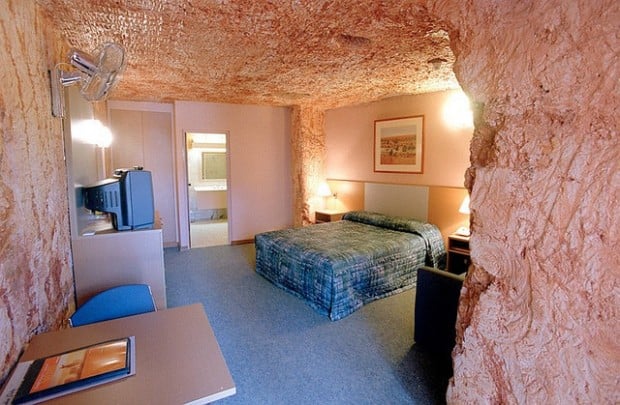
Image source: Smart Encyclopedia
Another mining site, but completely different, is Coober Pedy. This remote town in northern South Australia is home to most of the world’s opal and is often referred to as the opal capital of the world. That’s not exactly what makes this town so interesting. The reason it’s popular is basically because it’s an underground town. Most of the inhabitants live in burrows, which are underground houses. Living underground is the only way to survive the scorching heat of the Australian Outback.
4. Bungle Bungles
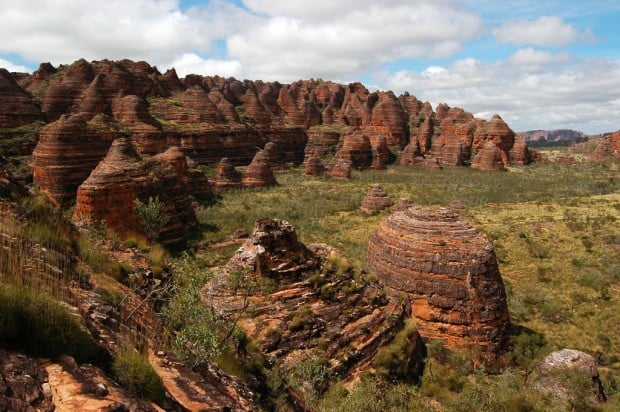
Image source: David
The otherworldly Bungle Bungle Range occupies much of Purnululu National Park in the northwest corner of Western Australia. The entire mountain range consists of dome or honeycomb peaks with alternating orange and gray sandstone stripes. The geology of the Bungle Bungles is so unique and important that the area has been designated a UNESCO World Heritage Site. The rock formations were formed about 350 million years ago, while the area has been inhabited by Aboriginal people for over 40,000 years. However, due to the remoteness of the area, it was not until 1983 that it was discovered by white people.
5. Fraser . Island
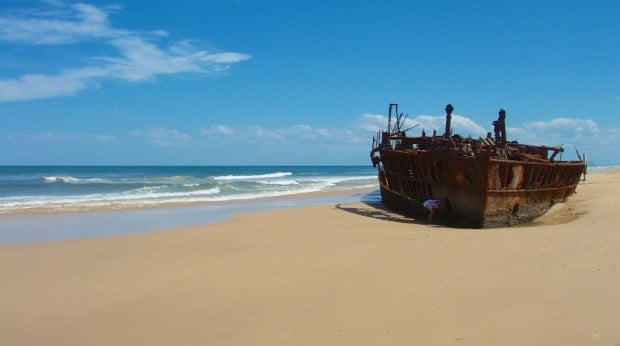
Image source: Paul D’Ambra
At 120 kilometers long, Fraser Island, off the tropical coast of Queensland, is the largest sand island in the world. The entire island is stunningly landscaped, covered with dense forests, dotted with crystal clear freshwater lakes and beautiful sandy beaches. It’s a popular destination among all-terrain drivers, campers, and eco-tourists.
6. Murphy’s Haystacks
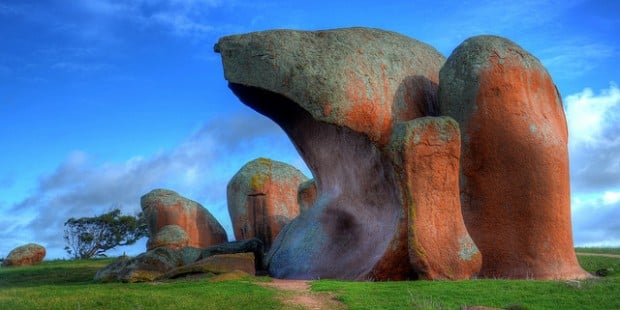
Image source: Chris Fithall
Chances are you haven’t heard of Murphy’s Haystacks before. The reason is because they are completely unpopular with tourists. Located between Port Kenny and Streaky Bay on the Eyre Peninsula in South Australia, they are only visited by people traveling to or from the Nullarbor Plain, one of the most desolate places in the world. Murphy’s Haystacks is a collection of strange rock formations in the middle of a field. It is believed to be more than 1.5 billion years old and is one of the strangest geological sites in South Australia.
7. Wave rock range
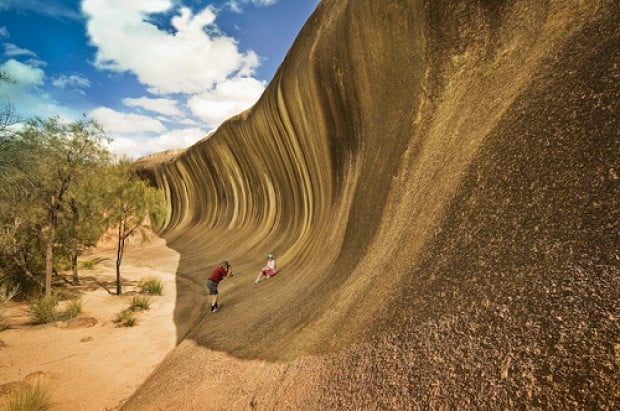
Image source: Tourism Western Australia
This is another geological wonder. Wave Rock is located in the heart of Western Australia’s Wheat Belt, near the town of Hyden. The name of this area could not be more appropriate, the rock is in fact exactly the same as the crashing waves of the sea. Wave Rock is about 14 meters high and 110 meters long. It’s not the biggest natural attraction in Australia, but it’s definitely worth a visit.
8. Bunda Cliffs
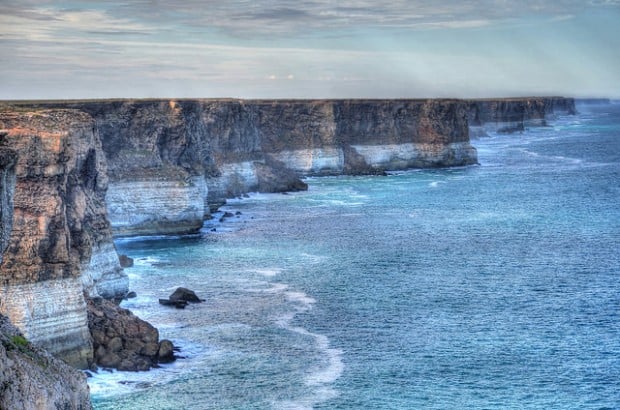
Image source: Chris Fithall
The Bunda Cliffs form the southern boundary of the vast Nullarbor Plain covering a large area in western South Australia and eastern Western Australia. It is the largest piece of limestone in the world. These cliffs are where the plain ends abruptly and falls into the Southern Ocean. They form a 100 km stretch of coastline in the Great Australia Bight, part of which is, in fact, the longest coastal cliff in the world.
9. Ningaloo Reef

Image source: sharon mckellar
Ningaloo Reef can be considered a brother to the much more famous Great Barrier Reef. While the Great Barrier Reef in Queensland is flooded with visitors, Ningaloo Reef in Western Australia is an oasis of peace. It is the largest coral reef in Australia and the world’s only major reef close to the coast, which is one of the reasons why Ningaloo is a UNESCO World Heritage Site. You can basically just walk into the water and start diving.
10. Hamelin Pool
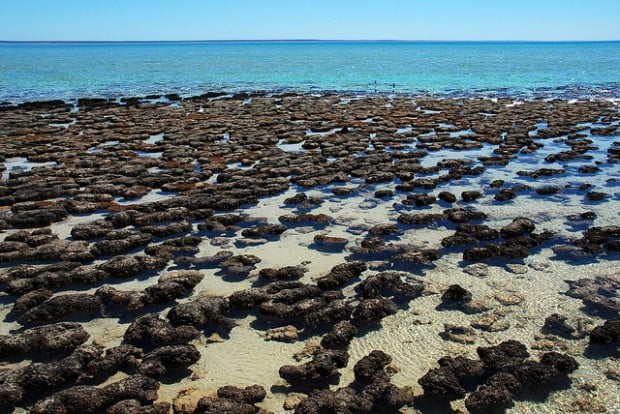
Image source: Robert Young
One of the true natural wonders of the world, Hamelin Pool is home to the largest number of stromatolites in the world, stromatolites are essentially living fossils, 3.5 billion years old (!) and the creatures themselves responsible for creating oxygen-rich air. Hamelin Pool Marine Reserve is one of only a few places on earth where stromatolites can still be found, and it’s one of the most accessible. To visit this place, all you need to do is park and walk across the beach and onto the boardwalk.



